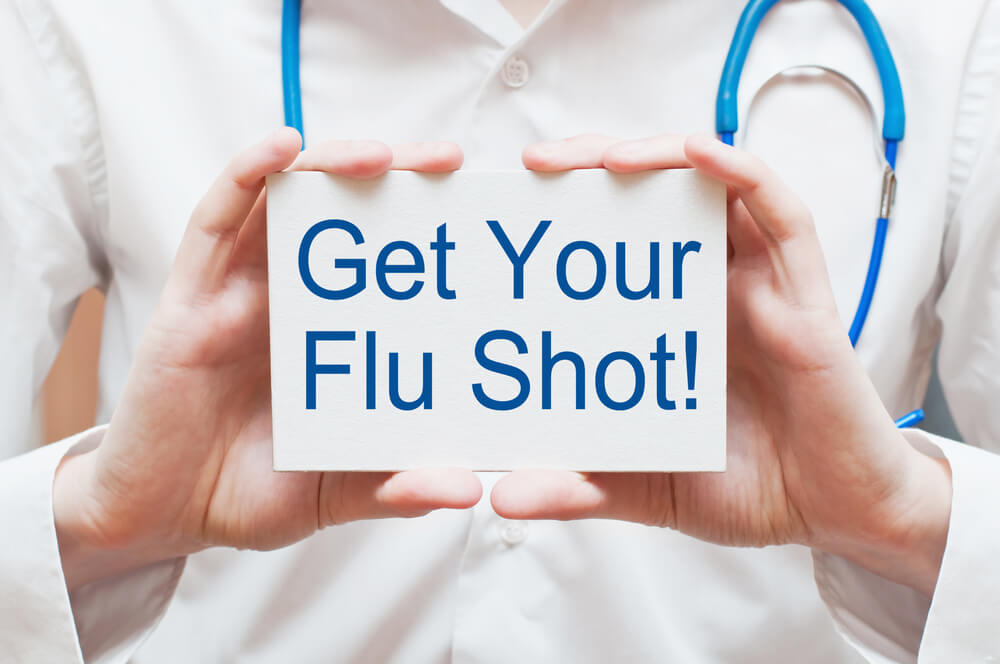As flu season approaches, many of us start thinking about the annual flu shot. However, did you know that not all flu shots are the same? In fact, there are several types of flu shots available to the public, each designed to provide effective protection against the seasonal influenza virus.
This comprehensive guide, crafted by the experts at Carreras Medical Center, will walk you through the different types of flu shots and help you make an informed decision about which one might be the best choice for you and immunizations in general.
Understanding the Flu Virus

Before we dive into the different types of flu shots, it’s important to understand the influenza virus itself. The flu can be best defined as a contagious respiratory condition brought on by influenza viruses that infect the nose, throat, and, in some cases, the lungs. Symptoms can range from mild to severe and may include fever, cough, sore throat, body aches, and fatigue.
The influenza virus is constantly evolving, which is why a new flu vaccine is needed every year. The flu vaccine helps your immune system recognize and fight the specific strains of the virus expected to be circulating in a given flu season.
Types of Flu Shots
Trivalent Vaccines
Trivalent vaccines, as the name suggests, protect against three different influenza strains. These vaccines include two strains of influenza A, and one strain of influenza B. Trivalent vaccines are a good choice for individuals who want basic protection against the flu.
Quadrivalent Vaccines
Quadrivalent vaccines provide protection against four different strains of the influenza virus: two strains of influenza A and two strains of influenza B. They are designed to offer broader protection and are generally recommended for a wider range of individuals.
High-Dose Vaccines
High-dose flu vaccines are formulated with four times the antigen found in standard-dose vaccines. This makes them more effective in stimulating an immune response, particularly in older adults. Older individuals often have a weaker immune response, so a high-dose vaccine can provide better protection.
Adjuvanted Vaccines
Adjuvanted vaccines are formulated with an adjuvant, which is an ingredient added to enhance the body’s immune response to the vaccine. These vaccines are also designed to provide stronger protection, especially for older adults. The adjuvanted vaccine helps create a more robust and longer-lasting immune response.
Live Attenuated Influenza Vaccine (LAIV)
The live attenuated influenza vaccine, or LAIV, is unique because it is administered as a nasal spray instead of an injection. It contains weakened, live flu viruses and is approved for use in healthy individuals between the ages of 2 and 49. The LAIV may be a good choice for those who prefer a non-injectable option.
Egg-Free Vaccines
Some people are allergic to eggs and cannot receive traditional flu vaccines, which are often grown in chicken eggs. However, egg-free vaccines are now available. These vaccines are produced using alternative methods and are suitable for individuals with egg allergies.
Cell-Based Vaccines
Cell-based vaccines are produced by growing the flu virus in animal cells rather than chicken eggs. This method can be more efficient and is less likely to be affected by egg-related allergies. It is another option for those who cannot receive egg-based vaccines.
Recombinant Vaccines
Recombinant vaccines are manufactured using a genetic engineering process that does not require growing the flu virus at all. Instead, specific proteins from the virus are used to stimulate an immune response. These vaccines are suitable for people with egg allergies and are an excellent choice for those looking for an alternative to traditional vaccines.
Different Flu Shot Types
In addition to the various formulations of the flu vaccine, there are also different delivery methods. Depending on your age, health status, and personal preferences, you may receive your flu shot in one of the following ways:
- Standard Injection: The most common method involves a needle injection into the muscle, usually in the upper arm. This is suitable for individuals aged six months and older.
- Intradermal Injection: An ultra-fine needle is used to inject the vaccine just under the skin. It’s often preferred by those who are afraid of needles and is suitable for individuals aged 18 to 64.
- Jet Injector: This method uses a high-pressure, narrow stream of fluid to penetrate the skin without using a needle. Jet injectors are relatively uncommon and are generally suitable for individuals aged 18 to 64.
- Nasal Spray: The live attenuated influenza vaccine (LAIV) is administered as a nasal spray. It is suitable for healthy individuals aged 2 to 49 who prefer a non-injectable option.
Why Get Vaccinated?
Getting a flu shot is one of the most effective ways to protect yourself and those around you from the seasonal influenza virus. The flu can lead to hospitalization, severe complications, and, in some cases, even death. By getting vaccinated, you not only reduce your risk of falling ill but also help prevent the spread of the virus to others, especially vulnerable populations like young children and the elderly.
Key Reasons to Get a Flu Shot
- Personal Protection: The flu shot significantly reduces your risk of contracting the flu. Even if you do get sick, the symptoms are often milder in vaccinated individuals.
- Community Immunity: By getting vaccinated, you contribute to community immunity or herd immunity. This helps protect those who cannot get vaccinated, such as infants, pregnant women, and individuals with certain medical conditions.
- Reduced Healthcare Burden: Fewer flu cases mean less strain on healthcare facilities and resources. By getting vaccinated, you help reduce the burden on hospitals and clinics during flu season.
- Protection of Vulnerable Populations: The elderly, infants, pregnant women, and people with chronic illnesses are more susceptible to severe flu complications. Your vaccination helps protect these vulnerable groups.
- Reduced Transmission: The more people who are vaccinated, the less the virus can spread within the community. This reduces the chances of flu outbreaks in schools, workplaces, and other public settings.
Timing Matters
Flu season typically runs from fall to early spring, with the peak occurring between December and February. It’s best to get vaccinated before flu activity starts to increase. However, it’s never too late to get a flu shot. Even if flu season is well underway, the vaccine can still offer protection, as the virus may continue to circulate.
Flu Shot Myths Debunked

Before we conclude, let’s address some common myths and misconceptions about the flu shot:
- Myth 1: The flu shot can give you the flu. This is not true. The flu vaccine contains either inactivated flu viruses or pieces of the virus, making it impossible to contract the flu from the vaccine.
- Myth 2: The flu shot is not effective. While the effectiveness of the flu vaccine can vary from year to year, it still provides substantial protection and reduces the severity of symptoms if you do get sick.
- Myth 3: I don’t need a flu shot every year. Since the flu virus changes each year, annual vaccination is necessary to ensure protection against the most current strains.
- Myth 4: I’m young and healthy, so I don’t need a flu shot. Everyone, regardless of age and health, should consider getting vaccinated to protect themselves and others.
If You’d Like To Hear More
In conclusion, there are various types of flu shots available to the public, each tailored to specific needs and preferences. Choosing the right type of flu shot depends on your age, health status, and personal preferences. However, the most important thing is to get vaccinated.
The flu shot is a crucial tool for preventing the spread of influenza, protecting vulnerable populations, and reducing the burden on healthcare systems. It is safe, effective, and an essential part of maintaining your health and well-being during flu season. Don’t let myths or misconceptions deter you; the flu shot is a key step in keeping yourself and your community healthy. So, roll up your sleeve and get your flu shot to ensure a healthier and safer flu season for all.







